Learning Objectives
- Learn the common external parasites in dogs
- Attain basic knowledge of their rudimentary descriptions, lifecycles, and control methods
- Identify diseases that could be transmitted by these parasites
A parasite is any species or organism that benefits from a host by obtaining nourishment while living inside or outside a host’s body. A parasite survives by feeding on the host without the aim of intentionally killing it; however, parasite feeding or toxin release can cause death in some hosts. Parasite control is critical when it comes to preventing sickness and death; thus, the main goal of controlling parasites in dogs is to eliminate them.
Terminology:
- Endoparasite: lives inside a host’s body
- Ectoparasite: lives on the surface of a host’s body
- Definitive host: a host wherein a parasite completes its development
- Intermediate host: a host mainly for completing a life cycle stage; some parasites spend time in this host
- Paratenic host: an optional intermediate host, where a parasite can survive but does not develop further unless the parasite is passed to the definitive host.
Ticks
Different species of ticks can be found on dogs:

Different species have similar lifecycles but utilize different hosts and are associated with different diseases.
Life Cycle
This species' life cycle includes three hosts—mating also occurs on the host. After fertilization, the female feeds for 14 days before laying around 4,000 eggs in protected areas. Due to the females' proclivity to move upward, egg masses are likely found in aboveground cracks and fissures. Eggs hatch in 17–30 days. The larva feed for around six days, then drop to the ground and molt to the nymphal stage lasting 5–23 days. The nymph feeds for 4–9 days, then leaves the host and molts to adulthood. This means that countless generations can survive each year under favorable conditions. In harsh conditions, unfed larvae can live nine months, unfed nymphs six months, and unfed adults 19 months.
Ticks bury their mouthparts into the skin, so mouthparts should be removed along with the body when trying to remove ticks.
Ticks can transmit diseases to the host through their saliva:
- Lyme disease: Borrelia burgdorferi causes this bacterial tick-borne illness. Infected animals can have skin discoloration, heart, and joint illness. It is found only in a few states in the US. In Europe, the bacteria are also transmitted by ticks of host wildlife such as rats and deer.
Signs of Lyme disease include:
- Sudden onset of lameness with arthritic pain in one or more joints (carpal or wrist joint)
- Hyperthermia with enlarged surface lymph nodes

- Ehrlichiosis: An intracellular parasite inside the white blood cells is the main cause of Ehrlichiosis. Ticks transmit this parasite while feeding on an infected animal's blood. It is widespread in Europe and other Mediterranean countries. The immune system's ability determines the disease's severity and recovery. German shepherds, for example, are highly prone to sickness. These ticks may also carry babesiosis.
Signs of Ehrlichiosis include:
- Hyperthermia
- Inappetence
- Enlarged lymph nodes
- Epistaxis
- Skin hemorrhage
- Anemia
- Babesiosis: is caused by a protozoon that develops in tick salivary glands. Transmission occurs when a tick feeds on the host. It is widespread in Europe. The parasite infects the red blood cells, and its severity varies based on the species and the animal's health. Some of the symptoms include anemia, pale mucous membranes, and breathing problems.

Fleas
Ctenocephalides canis
Ctenocephalides canis, also known as Dog Flea.
Life cycle
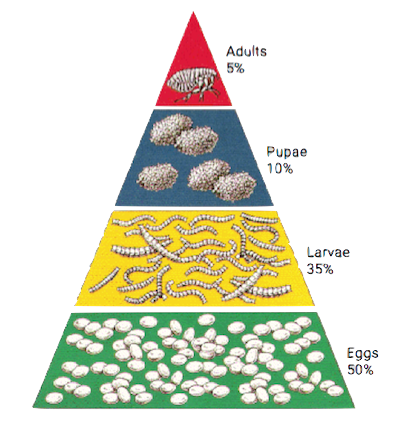

Fleas are holometabolous – developing from egg to adult in four phases (egg, larva – three larval instars, pupa, and adult). The life cycle of C. canis is quite similar to C. felis. Two days after the male and female attach to the host, egg production begins. The eggs and larvae tolerate temperatures between 13 and 32°C and relative humidity between 50 and 90%. In these conditions, adults can survive for weeks without food. Pupa can be latent for a year or more but can hatch in 30 seconds when a suitable host is present. The life cycle can be completed in two to four weeks, and the population peaks in the late summer or early fall on host animals.
Parasitic worms like Dipylidium caninum can use C. canis as an intermediate host.
Mites
Sarcoptes scabiei
The Sarcoptic mange mite or Itch mite can cause extreme itchiness which can lead to alopecia. Another symptom includes the formation of crust and scale on the entire body.
This mite belongs to the class Arachnida, family Sarcoptidae and prefers areas like the ears, muzzle, face, and elbows—areas which are thin-haired. When left untreated, severe sarcoptic mange infestation can smell sour. It is necessary to note that this parasite is zoonotic and can cause mosquito-like bites in humans.

![11 Pictures of Dog Scabies [With Veterinarian Comments]](https://dogtraining.world/wp-content/uploads/2024/01/image-2.jpeg)
Treatment
There are topical and systemic treatments. The availability of treatments varies by country.
Demodex canis
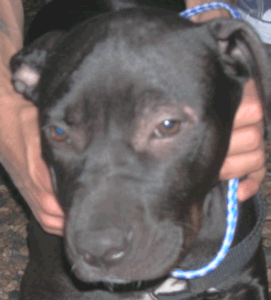

Demodex canis is a long, cigar-shaped mite that burrows in hair follicles and sebaceous glands. Due to the location of this mite, the spread is often difficult. Thus, it is assumed that transmission happens during the suckling stage. Immunocompromised animals are prone to be infected. An early symptom is alopecia around the eyes and on the forelegs.
Types of Infection:
- Mild—seen as skin inflammation, thickening, and hair loss
- Severe—with a moist and dried discharge of serum and pus, a lot of inflammation and hair loss
Diagnosis
Since this mite burrows in the hair follicles and sebaceous glands, deep scrappings are necessary to diagnose infected animals. This can be performed with liquid paraffin and scrapping the skin until blood appears. In normal healthy dogs, commensal mites might be present but increased population points to an active infection.
Treatment
Amitraz is the most extensively used acaricide, but the organophosphate cythioate is equally effective. Because mites live deep in the dermis, most topical acaricides cannot reach them; therefore, repeated treatments are required, though immediate results are not expected. Recovery from localized squamous mange may take 1–2 months, whereas recovery from generalized pustular mange should take at least three months.
Generalized canine demodicosis has been successfully treated with oral or injectable ivermectin 250–300 g/kg, milbemycin 2 mg/kg, and moxidectin 400 g/kg. Start ivermectin and moxidectin at lower doses and check for side effects. Severe pyoderma may require antibiotic therapy.
Control
If demodicosis is controlled, certain bitches with susceptible offspring should be removed from breeding units.
Otodectes cynotis
Otodectes, also known as ear mites, infect cats, dogs, and other small animals. The mites are found in the external ear canal, tail, and feet. They feed on the waxy coating of the ear canal, often causing damage. Otodectes is a three-week parasite that lives on the host.
They cause head shaking and ear scratching. The ear canal has a brownish waxy discharge, and the feeding mites damage the canal lining, causing irritation and bacterial infection. Transmission occurs by direct contact.
Treatment
Cleaning the ear canal before using eardrops is necessary. Selamectin and imidacloprid in topical preparations exhibited good control. Permethrin, thiabendazole, and monosulphiram eardrops are beneficial for dogs. Fipronil eardrops are also helpful for cats and dogs. When applying the eardrops, it is essential to massage the base of the ear of the animal to distribute the medication.
Control
Bedding should be replaced or cleaned thoroughly. Due to the mite's ubiquity and high infectivity, simultaneous treatment should be provided to all animals in the same household or kennels. Mites that have traveled out of the ear canal will need to be treated throughout the body.

Tropics
Consider unique parasites located in the tropics

https://www.troccap.com/canine-guidelines

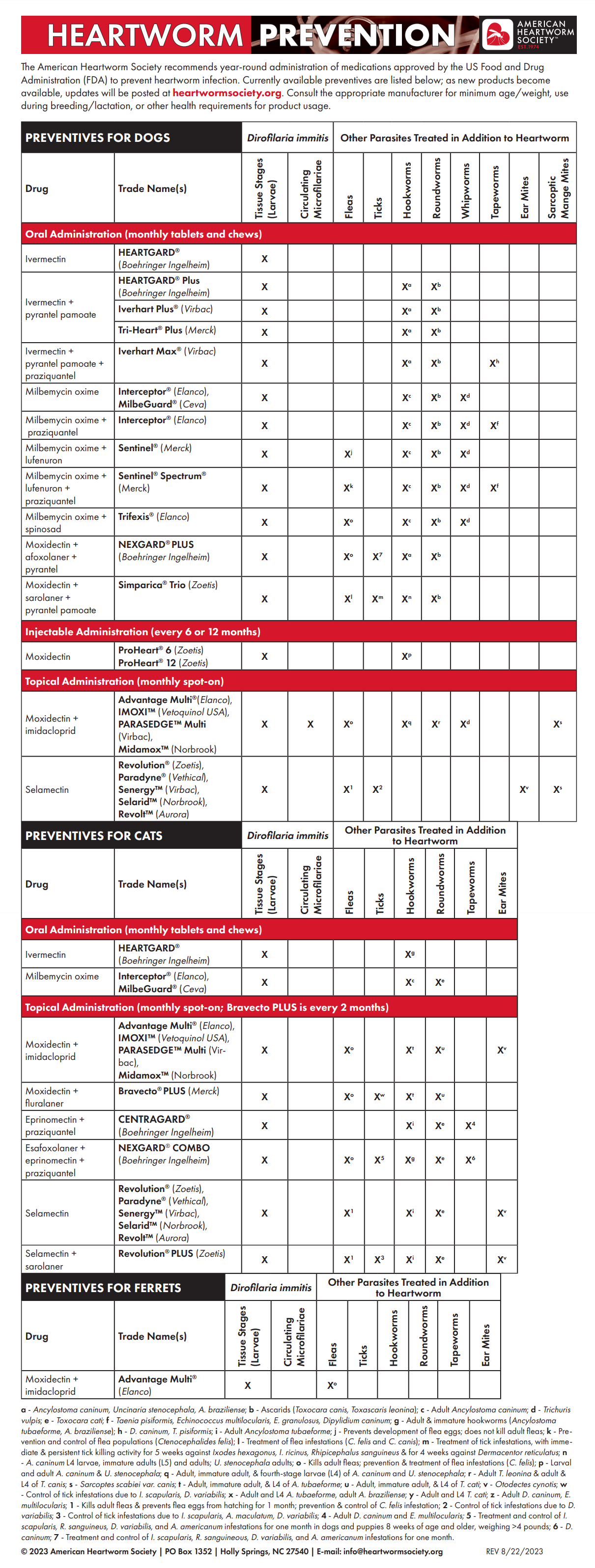




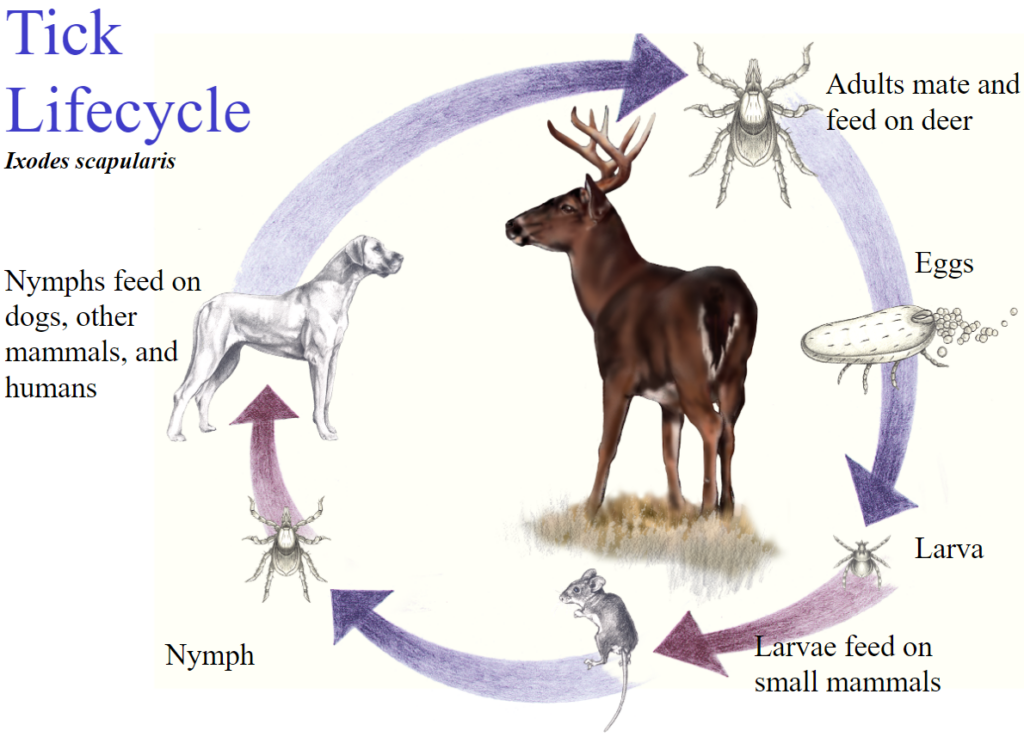

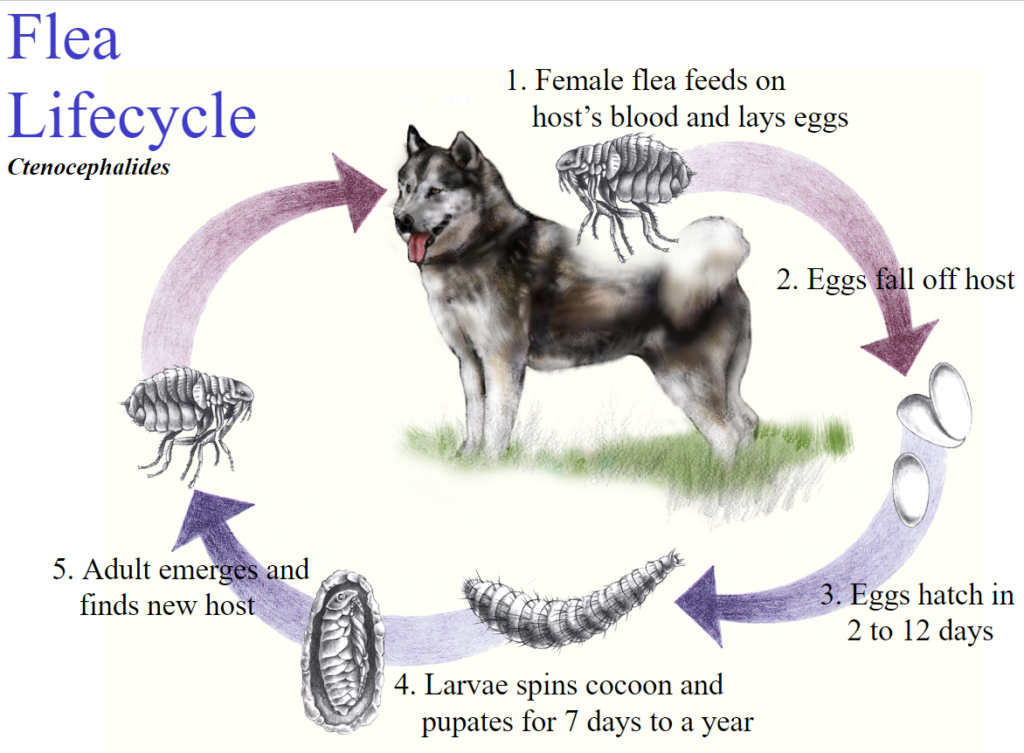
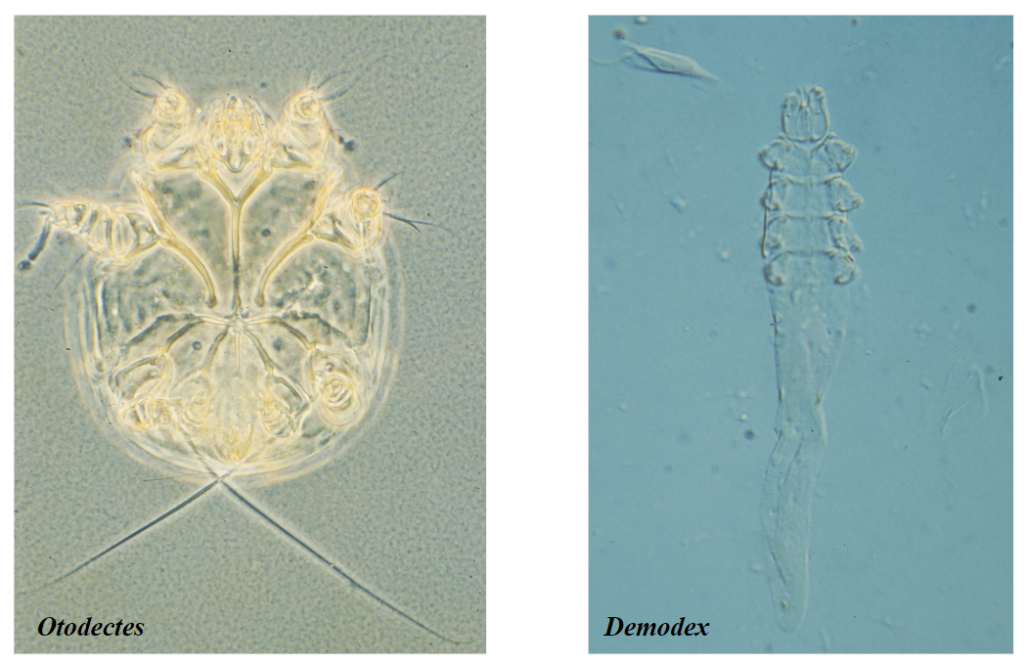
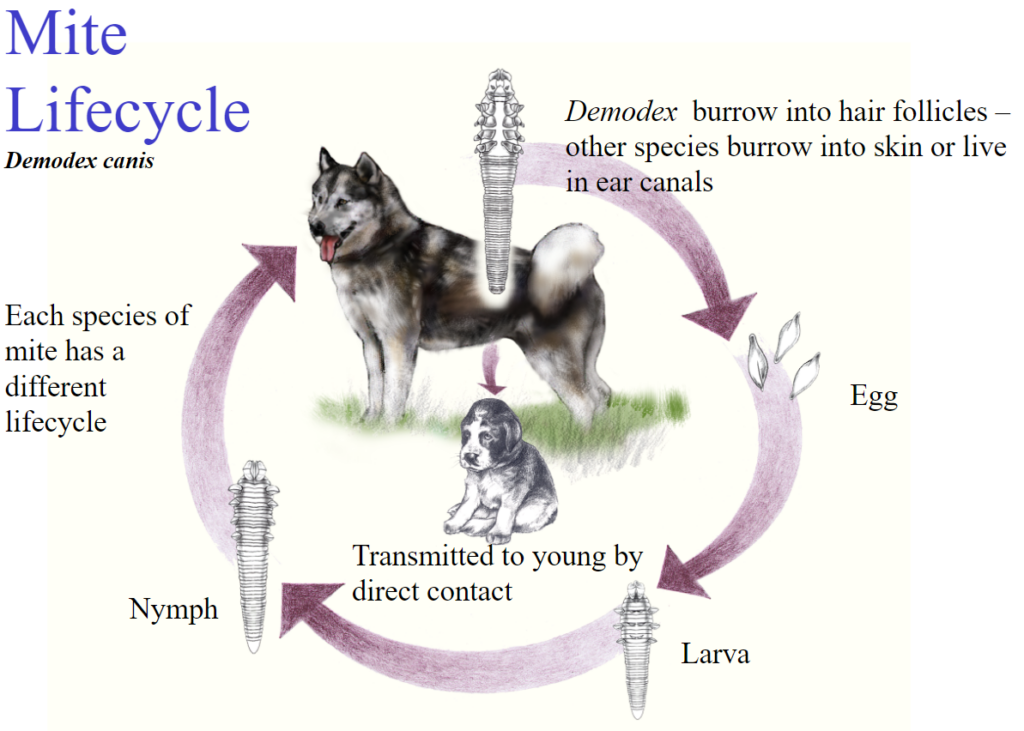

Responses